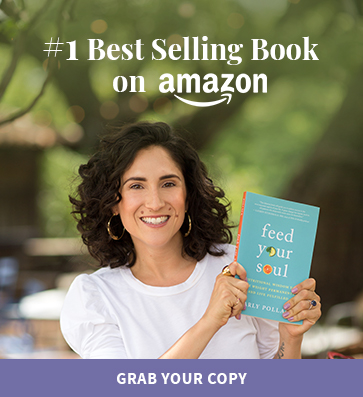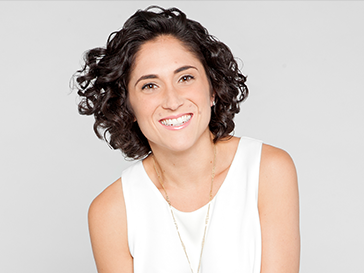{Video} Are You Taking the Wrong Probiotic?
July 29, 2022

I guess that you probably fall into one of these categories:
- You’ve been taking a probiotic forever, and every time you swallow it, you wonder if it’s even doing anything.
- You don’t take a probiotic but get constant ads telling you to take one, and well, there’s room for improvement in the gut/bloating/poop arena, but you don’t want to make the wrong choice, so you make no choice at all.
- You used to take a probiotic, but didn’t notice a difference and just never bought more when the bottle ran out. They’re all the same, right?
Probiotics are massively important to your health, whether you get them through food or supplementation. They are not, however, easy to navigate and if you want to make sure you are doing the right thing you will need to know the following:
- When it’s time to stop taking them
- How to know what strain you need and when to rotate
- Navigating dosage so you aren’t taking too much/too little
Let’s do a quick 101; if you’re a probiotic pro, skip to the next section.
When you hear the word “probiotic,” you probably think about supplements; perhaps Jamie Lee Curtis’s face pops into your head (she’s cute, but that yogurt was trash) or something you get when drinking ye ol’ kombucha.
Probiotics are cultures of bacteria found in your intestines that, when consumed, have a beneficial effect on the body in countless ways. [1, 2]
In an ideal world, probiotics wouldn’t be necessary, but the unfortunate truth is that most of us don’t have enough beneficial bacteria in our gut. In today’s modern times (that’s a nice way of saying that we are swimming in a sea of toxins, we are constantly stressed, we overuse antibacterial soaps and antibiotics, have unhealthy diets high in sugar/low in fiber, and the list goes on), we become depleted of the beneficial bacteria we need to thrive.
Having the right kind of friendly bacteria can help balance the gut and has been clinically shown to improve a host of health conditions (IBS, candida/yeast, acne, depression, anxiety, sleep, hormones, and metabolism, to name a few!). Our gut flora works hard at assisting the body in breaking down food, absorbing nutrients, reducing inflammation, and supporting our immune system. [3, 4, 5, 6, 7,8,9,10, 11]
The small intestine contains billions of immune cells in our body. If the gut bacteria is out of balance and there’s a large amount of opportunistic bacteria in the small intestine, our immune system will become activated. An activated immune system leads to chronic inflammation and poor nutrient absorption, which creates a vicious cycle of you feeling crap-tastic. [12, 13]
What strain is best?
There are many different strains of probiotics. Some supplements contain a single strain (such as saccharomyces boulardii, which is great to take after antibiotic therapy or when on a candida protocol) or multiple strains (lots of different lactobacillus or Bifidobacterium strains). Some are spore or soil-based, and others are cultured from yeast.
We can test which strains you are deficient in, which is the only way to custom tailor a probiotic to your needs. Many times, I switch the probiotic strain after seeing a client’s test results. For example, they have an overgrowth of lactobacillus but have taken that probiotic for two years. Switching them to a spore-based or bifido strain is the difference between a probiotic working wonders versus doing "nothing" since your body already has what it needs for this type of probiotic.
The stool test tells us so much more than just what probiotic you need. If you’re interested in taking this test, you can read more about it here. We use the GI-Map from Diagnostic Solutions. Reply to this email and let me know if you want me to send you a stool kit!
If living on the edge is more your thing, then my advice is to rotate the strain of probiotic every 3-4 months to ensure you are giving your microbiome the variety it needs.
In addition to supplements, you can up your intake of probiotic-rich foods.
Yogurt and kefir (unsweeted, coconut or nut based preferred)
- Sauerkraut
- Kombucha *
- Natto
- Cultured buttermilk
- Kimchi
- Pickles
- Raw Cheese
When looking for probiotic-rich foods in the grocery store, be mindful of added sugars, preservatives, and any extra ingredients that are highly processed (aka if you can't picture the ingredient sitting on a plate in your kitchen, it's an ultraprocessed food).. It’s also important to note that fermented foods don’t work for everyone, which is why working one-on-one with a coach is essential (check out this page if you’d like to learn more about my Wellness Starter Program).
How do I know if I shouldn’t be taking a probiotic?
If you’re taking a probiotic and feeling worse (more bloat, fatigue, poop issues, etc.), this is most likely a sign there’s an underlying infection that needs to be addressed first. Gut issues typically have a bacterial, fungal, or parasitic overgrowth as the root cause and adding more (although beneficial) bacteria to this environment can fuel the fire.
How can I ensure I’m getting the most out of my probiotic?
The biggest misconception I hear about probiotics is that all you need to do is swallow a pill and you will have a diverse and robust gut microbiome. Think of probiotics as transient bugs. You are dousing the colon with these good bugs, but unless you feed them and allow them to populate themselves, within a few weeks, you will wind up pooping them out.
Enter prebiotics: food for the good bugs (they like to eat too).
The most common prebiotics are galactooligosaccharides (GOS), fruto-oligosaccharides (FOS), oligofructose (OF), chicory fiber, and inulin.
Foods that contain good-quality prebiotics:
Bananas, Apples, Onions, Garlic, Chickpeas, Lentils, Nectarines, White Peaches, Persimmons, Watermelon, Grapefruit, Pomegranate, Mushrooms, Jerusalem Artichokes, Chicory, Leek, Spring Onion, Asparagus, Beetroot, Fennel, Green Peas, Snow Peas, Cabbage, Dandelion Greens, Burdock, Eggplant, Endive, JIcama, Konjac, Radicchio, Flaxseeds, Dates
Getting a variety of prebiotics every day can be tricky, so I take Paleofiber, Optifiber Lean, and Prebiomax in rotation to support my gut health. I was taking probiotics and eating prebiotic-rich foods, but despite this, I still had stool results that showed a weak population of good bugs. For whatever reason, my body needed more, and I took it to the next level with these supplements.
A quick note about antibiotics
Antibiotics do their job: they detonate a bomb to kill whatever nasty bug is causing an issue. But like a bomb, they destroy everything, not just the bad guys. It’s important to repopulate with good bacteria to keep other infections your body will inevitably encounter post-antibiotic at bay (reminder: your good bacteria supports your immune system). I have a specific post-antibiotic protocol here. Just remember to separate taking your antibiotics and probiotics by at least 3 hours.
If you’ve been taking probiotics for a while and feel like you need a probiotic makeover or if you want to start taking probiotics to support your gut health, email me (I’m your person for all things health). My team and I are here to help you feel your absolute best.
References:
[1} https://pubmed.ncbi.nlm.nih.gov/21992949/
[3]https://pubmed.ncbi.nlm.nih.gov/25840765/
[4]https://pubmed.ncbi.nlm.nih.gov/28166427/
[5]https://pubmed.ncbi.nlm.nih.gov/19732158/
[6]https://pubmed.ncbi.nlm.nih.gov/29698377/
[7]https://pubmed.ncbi.nlm.nih.gov/29197739/
[8]https://pubmed.ncbi.nlm.nih.gov/28778332/
[9]https://pubmed.ncbi.nlm.nih.gov/22347829/
[10] https://pubmed.ncbi.nlm.nih.gov/30484668/
[11]https://pubmed.ncbi.nlm.nih.gov/31284694/






